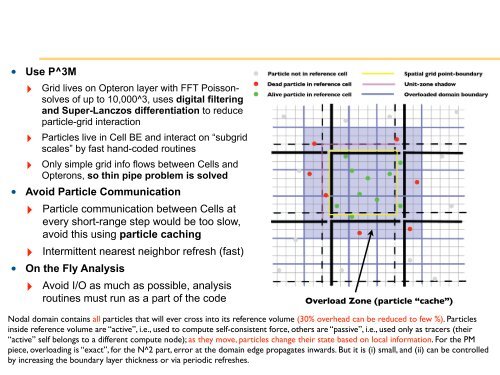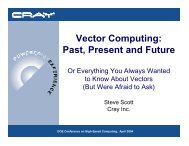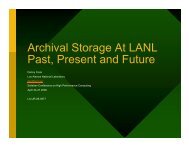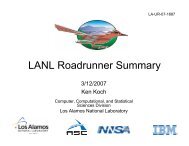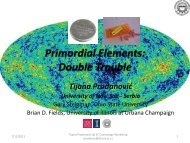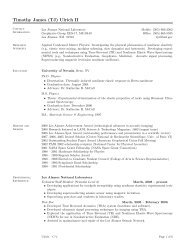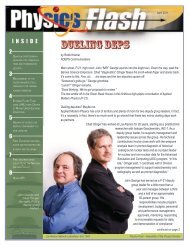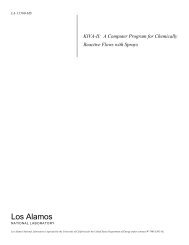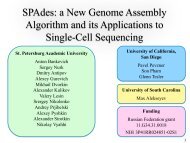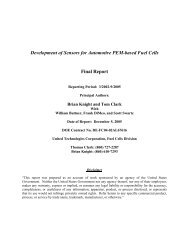Salman Habib - Los Alamos National Laboratory
Salman Habib - Los Alamos National Laboratory
Salman Habib - Los Alamos National Laboratory
Create successful ePaper yourself
Turn your PDF publications into a flip-book with our unique Google optimized e-Paper software.
• Use P^3M<br />
‣ Grid lives on Opteron layer with FFT Poissonsolves<br />
of up to 10,000^3, uses digital filtering<br />
and Super-Lanczos differentiation to reduce<br />
particle-grid interaction<br />
‣ Particles live in Cell BE and interact on “subgrid<br />
scales” by fast hand-coded routines<br />
‣ Only simple grid info flows between Cells and<br />
Opterons, so thin pipe problem is solved<br />
• Avoid Particle Communication<br />
‣ Particle communication between Cells at<br />
every short-range step would be too slow,<br />
avoid this using particle caching<br />
‣ Intermittent nearest neighbor refresh (fast)<br />
• On the Fly Analysis<br />
‣ Avoid I/O as much as possible, analysis<br />
routines must run as a part of the code Overload Zone (particle “cache”)<br />
Nodal domain contains all particles that will ever cross into its reference volume (30% overhead can be reduced to few %). Particles<br />
inside reference volume are “active”, i.e., used to compute self-consistent force, others are “passive”, i.e., used only as tracers (their<br />
“active” self belongs to a different compute node); as they move, particles change their state based on local information. For the PM<br />
piece, overloading is “exact”, for the N^2 part, error at the domain edge propagates inwards. But it is (i) small, and (ii) can be controlled<br />
by increasing Katrin Heitmann, the boundary <strong>Los</strong> <strong>Alamos</strong> layer <strong>National</strong> thickness <strong>Laboratory</strong> or via periodic refreshes.<br />
LBNL, March 12, 2009


